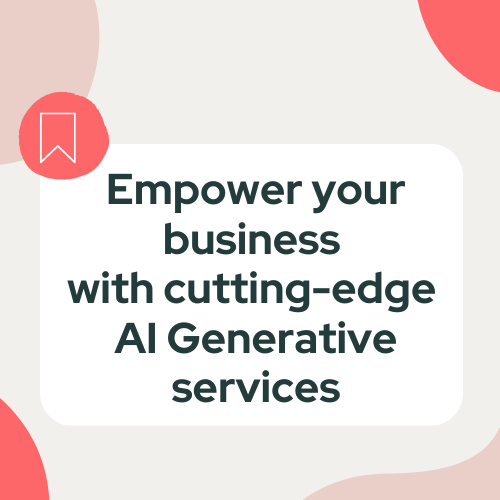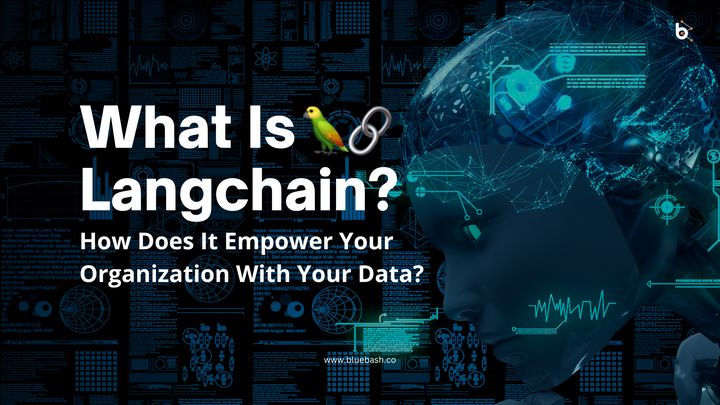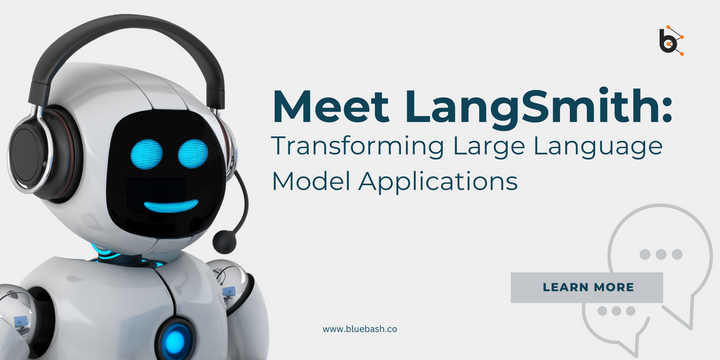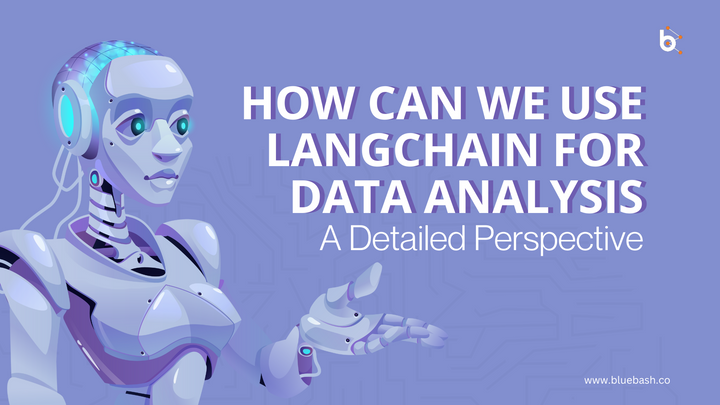Generative AI Use Cases: How It Is Shaping Industries?

Generative AI, is a type of artificial intelligence that focuses on creating original and unique content or data rather than processing or analysing existing data. Generative AI models may generate content that closely resembles human-generated content, such as text, photographs, videos, and more.
These models are trained on enormous datasets containing a diverse spectrum of human-created information, allowing them to learn the patterns, styles, and structures present in different forms of data. Generative AI was originally introduced in the 1960s in chatbots. But in 2014, with the introduction of generative adversarial networks, or GANs Generative AI could create authentic images, videos and audio of real people.
Some Use Cases of Generative Are -
Generative AI in Content creation and marketing
Generative AI has revolutionized customer service by empowering chatbots and virtual assistants to answer questions, retrieve data, provide guidance, assist with tasks like appointment scheduling, and even access third-party business information.
Content Generation
Generative AI can create content across different domains:
Text Generation: AI models like GPT-3 can produce human-like text, assist in content creation, and you can automate Generative AI for writing tasks. This can be a game-changer in the fields of journalism, blogging, and copywriting.
Image Synthesis: AI can generate lifelike images, paintings, and graphics. This is valuable in creative fields such as graphic design, advertising, and art creation.
Music Composition: Generative AI is capable of composing music by analyzing patterns and harmonies. Musicians and composers can use AI-generated music as a source of inspiration or even collaborate with AI to create unique compositions.
Customer Service and conversational AI
Generative AI has revolutionized customer service by empowering chatbots and virtual assistants to answer questions, retrieve data, provide guidance, assist with tasks like appointment scheduling, and even access third-party business information. This enhances the overall user experience, reduces response time, and simplifies tasks like setting reminders, web searches, and smart device control through voice commands.
Operational Tasks:
Generative AI applications simplify operational tasks, such as summarizing documents, generating presentation prompts, and providing topic ideas for blogs or marketing campaigns. In HR operations, it assists in candidate assessments and onboarding through AI-enabled internal portals. Moreover, AI can enhance product photography by creating realistic images for e-commerce.
Content Summarization and Personalization
Email Management: Generative AI can analyze and summarize lengthy emails, making inbox management more efficient. It can also personalize email responses, saving time and ensuring effective communication.
News Aggregation: AI can curate personalized news summaries by understanding users' interests and preferences. This keeps users informed without overwhelming them with information.
Content Translation and Localization
Language Translation: AI-driven language translation services have become highly accurate and can translate content between languages swiftly, facilitating global communication and market expansion.
Local Content Generation: AI can adapt content for different regions, cultures, or languages, ensuring that messages resonate with diverse audiences.
Concept Art and Idea Sharing:
While generative AI may not replace traditional designers and illustrators entirely, it aids in collaboration. By providing references and generating sketches, it facilitates communication between artists and clients, streamlining the design process. Furthermore, AI-powered storyboarding tools simplify the visualization of scripts for video production.
Semantic Image-to-Image Translation
It is possible to produce a realistic version of an image based on a semantic image or sketch. Due to its facilitative role in making diagnoses, this application is useful for the healthcare sector.
Customize Images
It involves transforming the external elements of an image, such as its colour, medium, or form while preserving its constitutive elements.
One example of such a conversion would be adding or removing a particular object from a picture, adding/removing a background etc. This type of conversion can also be used for manipulating the fundamental attributes of an image, colourize them, or change their style.
Creativity and Ideation
Brainstorming: Generative AI can assist in brainstorming sessions by generating ideas, and perspectives, and even suggesting creative solutions. It acts as a virtual ideation partner.
Art and Design: Artists and designers can use AI to create visual art, generate unique designs, and explore new creative directions. This fusion of human creativity and AI innovation can result in groundbreaking artwork.
Software Development:
Generative AI tools like GitHub Copilot, are a game-changer for developers. It provides code suggestions in multiple programming languages, aligning with the project context. This significantly enhances productivity and accelerates software development.

Process Automation
Data Extraction: AI can extract structured data from unstructured sources like documents, forms, and images. This accelerates data entry processes and reduces errors.
Logistics and Scheduling: Generative AI can optimize scheduling, route planning, and logistics, improving the efficiency of supply chains and transportation networks.
Education and Training
Customized Learning: Generative AI can tailor educational content to individual students' needs, providing personalized lessons and recommendations.
Simulations and Training: AI can create realistic simulations for training purposes in fields like healthcare, aviation, and military training, offering a safe and controlled learning environment.
AI in different industries
Healthcare and Life Sciences:
Drug Discovery: Generative AI can speed up the process of developing new drugs by designing unique protein sequences for antibodies, enzymes, vaccines, and gene therapies. This helps us discover new treatments faster
AWS ML Services: Companies such as 3M and Philips rely on AWS Machine Learning services like Amazon Bedrock, Comprehend Medical, and Transcribe Medical to enhance their operations and provide better patient care.
Real-Time Solutions: M is teaming up with Amazon Web Services (AWS) to bring you real-time solutions. These include speech recognition, clinical documentation, and virtual assistants, all designed to make healthcare workflows smoother and improve the accuracy of medical documentation.

Media and Entertainment:
AI-Generated Music: Musicians use Generative AI to enhance albums with new music genres, expanding creative possibilities.
Personalized Content and Ads: Media companies can employ Generative AI for personalized content and ads, improving engagement and marketing effectiveness.
Research and Education:
Content Summarization: Generative AI is revolutionizing learning by creating concise summaries of lengthy documents and lectures. This makes educational materials more accessible for students, aiding in better comprehension.
Practice Question Generation: This feature helps students prepare more effectively for assessments by providing them with a diverse set of practice questions.
Personalized Learning Pathways: Generative AI assists in creating personalized learning pathways, ensuring that educational experiences are tailored to individual needs and progress.
Automated Grading and Feedback: Generative AI opens new avenues for automating grading, measuring student performance, and providing near real-time feedback to both teachers and students. This streamlines the educational process and promotes continuous improvement.
Simulations and Virtual Reality: The technology extends to the creation of simulations and virtual reality learning environments. This enhances engagement and interactivity in educational settings, making learning more immersive and enjoyable.
E-Commerce
Generative AI is making a big impact on E-commerce. It's transforming how online businesses operate and improving various aspects of their operations. All thanks to AI E-commerce companies can now analyze customer data and behaviour to provide personalized shopping suggestions. This can make the shopping experience more convenient for each customer and can communicate with customers in a more interactive manner.
Generative AI is also helping in other ways, like enhancing product design, streamlining inventory management, and making supply chains more efficient. In short, it's changing the E-commerce world for good.
Software Development:
Streamlining Code Writing: Generative AI is gaining traction in software development by automating the generation of code. Developers often spend a significant amount of time on routine and undifferentiated coding tasks. Generative AI takes on this heavy lifting, allowing software developers to work more efficiently and allocate more time for creative and innovative aspects of development.
Tools like Amazon CodeWhisperer are AI coding companion, that accelerates developer productivity by offering real-time code suggestions based on comments and previous code in the IDE. During a preview, it increased task completion speed by 57% and success rates by 27%, showcasing its effectiveness in speeding up software development.
Conclusion:
Generative AI is a versatile and fast-progressing technology with a wide array of use cases that are transforming various industries and reshaping our ways of working. Whether it's crafting video games, producing text and images, enhancing image recognition systems, or exploring numerous other applications, generative AI is making a notable impact. The Generative AI market worldwide is projected to hit a substantial $110.8 billion by the year 2030. This growth is expected to be quite rapid, with an annual average rate of around 34.3 % from 2022-2030. Its future possibilities within these Generative AI use cases are boundless, promising a transformative journey ahead. So, prepare for an exciting exploration of generative AI's potential because the horizon for these use cases is incredibly promising.



